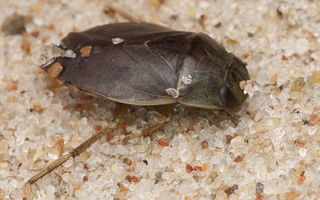- sort orderDefault
Photo title, A → Z
Photo title, Z → A
✔ Date created, new → old
Date created, old → new
Date posted, new → old
Date posted, old → new
Visits, high → low
Random - Google Map
- map
 home / Insecta · vabzdžiai / Hemiptera · straubliuočiai / Naucoridae · plačiosios vandenblakės / Ilyocoris cimicoides · paprastoji vandenblakė
home / Insecta · vabzdžiai / Hemiptera · straubliuočiai / Naucoridae · plačiosios vandenblakės / Ilyocoris cimicoides · paprastoji vandenblakė

-
 Ilyocoris cimicoides · paprastoji vandenblakė
Ilyocoris cimicoides · paprastoji vandenblakė
-
 Ilyocoris cimicoides · paprastoji vandenblakė
Ilyocoris cimicoides · paprastoji vandenblakė
-
 Ilyocoris cimicoides · paprastoji vandenblakė
Ilyocoris cimicoides · paprastoji vandenblakė
-
 Ilyocoris cimicoides · paprastoji vandenblakė
Ilyocoris cimicoides · paprastoji vandenblakė
-
 Ilyocoris cimicoides · paprastoji vandenblakė
Ilyocoris cimicoides · paprastoji vandenblakė
-
 Ilyocoris cimicoides · paprastoji vandenblakė
Ilyocoris cimicoides · paprastoji vandenblakė
-
 Ilyocoris cimicoides · paprastoji vandenblakė
Ilyocoris cimicoides · paprastoji vandenblakė
-
 Ilyocoris cimicoides · paprastoji vandenblakė
Ilyocoris cimicoides · paprastoji vandenblakė
-
 Ilyocoris cimicoides · paprastoji vandenblakė
Ilyocoris cimicoides · paprastoji vandenblakė
-
 Ilyocoris cimicoides · paprastoji vandenblakė
Ilyocoris cimicoides · paprastoji vandenblakė
-
 Ilyocoris cimicoides · paprastoji vandenblakė
Ilyocoris cimicoides · paprastoji vandenblakė
-
 Ilyocoris cimicoides · paprastoji vandenblakė
Ilyocoris cimicoides · paprastoji vandenblakė
Ilyocoris cimicoides · paprastoji vandenblakė
- saucer bug
- Schwimmwanze
- paprastoji vandenblakė, vandeninė ropuotė, paprastoji plaukikė
- żyrytwa pluskwowata
- Vattenbi
https://www.microcosmos.nl/bugs2/ilyocoris.htm Saucer bugs are shy and hide in the water plants. But they are very good swimmers, and when swimming look like water beetles with a dark back and a silver shimmering underside, because of a small sheet of air on the abdomen. When he's out of the water the Saucer bug is able to walk well, in the pond net he crawls quickly, sliding as if it were, under some leaves or in a safe corner.
Seen from above the shape of the body is oval, but in side view it is rather flat, like that of many bugs. The underside has a layer of short hairs which hold a sheet of air when under water. This air layer, which renders a silvery glimmer to the abdomen, is part of the breathing air supply for the insect - though some investigators think it's just there for a hydrostatic balance, a bit like the swim bladder of a fish. There's another supply of air: the space between the elytra (hardened wings) and the abdomen. The hind legs have broad fringes of swimming hairs that yield more power by creating a larger surface, they provide the animal with two powerful paddles. The head is streamlined with a smooth, round shape. The front legs are remarkable, they have the appearance of the scissors of a lobster. The femur ("thigh") is broadened by the powerful muscles within and has a groove. The tibia and tarsus(foot) are merged to a single claw, that can be pressed in the groove to form a merciless trap. The grim purpose of this construction may be clear: a small animal that gets caught in these sharp claws will never escape alive. The front legs look much like the deadly sucking jaws of the larva of the great diving beetle. But the claws of the Saucer bug are not hollow, and not used for sucking out it's prey, instead it stabs its razor sharp beak in them, then toxic digestive saliva is injected in the wound, after which the dissolved body parts are sucked in.
Under the elytra, the outer wings or front wings, all Saucer bugs have hind wings of normal length. The wings may also have a function in sealing the airspace between the elytra and the abdomen. In spring the males seem to be able to produce tones with there abdomen. After mating, during which the male sits in a slanted left position on the female, the eggs are injected in water plants. That makes them difficult to find.
Jei imsit į saują, nepamirškite, kad ši blakė gali savo snapą su nuodais įsmeigti jums į pirštą. Sako, skaudžiau už vapsvą. Čia šiek tiek apie šios blakės gyvenimo būdą: https://www.microcosmos.nl/bugs2/ilyocoris.htm Literatūroje paprastai rašoma, kad negali skraidyti, bet esu radęs už kilometro nuo vandens. Čia mini, kad kartais skraido.